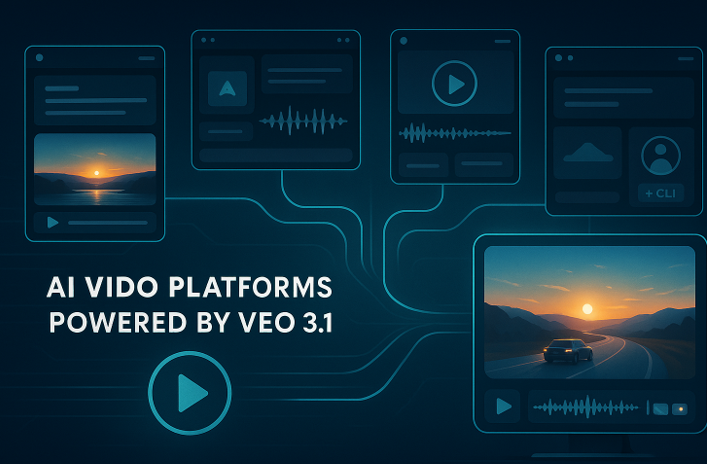Mastering Content Marketing: Strategies for Driving Meaningful Engagement
In today’s competitive digital landscape, content marketing has emerged as a vital tool for businesses looking to connect with their target audience, build brand awareness, and drive customer loyalty.
However, creating content is only half the battle; the real challenge lies in crafting content that resonates with the audience and drives meaningful engagement.
Meaningful engagement goes beyond simple likes and shares—it’s about fostering genuine connections, sparking conversations, and encouraging action that leads to measurable business outcomes.
To truly master content marketing, businesses must develop strategies that align with their goals, cater to their audience’s needs, and provide value consistently. This means understanding the nuances of content creation, distribution, and engagement, while also staying ahead of emerging trends.
Whether through blogs, videos, social media posts, or podcasts, every piece of content should be crafted with purpose and directed towards achieving specific business objectives.
By doing so, brands not only enhance their online presence but also establish themselves as trusted authorities in their industries. In this guide, we will explore effective strategies that can help you master content marketing and drive the kind of engagement that leads to long-term success.
Understanding Content Marketing
Content marketing is a strategic approach to creating and distributing valuable, relevant, and consistent content to attract and engage a target audience. Unlike traditional advertising, which focuses on direct promotion of products or services, content marketing builds relationships with potential customers by providing them with useful information that addresses their needs or interests. Tools like the Ameany AI Platform, which allows you to build AI agents for every need, make this process even more efficient by helping automate content research, creation, and personalization.
This can include various formats, such as blog posts, videos, podcasts, infographics, social media updates, and more. Content marketing is also essential for entrepreneurs looking to start dropshipping, as it helps attract and retain customers without large advertising budgets. The goal of content marketing is to provide value in ways that build brand awareness, trust, and customer loyalty over time.
By consistently offering content that resonates with an audience, brands can nurture relationships, keeping them engaged and more likely to convert into long-term customers.
Key metrics for assessing the success of content marketing campaigns include engagement metrics such as likes, comments, and shares, which measure how much the content resonates with the audience.
Additionally, businesses track conversion rates, sign-ups, and website traffic to assess whether the content is driving desired actions. Through effective content marketing, companies can differentiate themselves in competitive markets, positioning themselves as thought leaders and trusted authorities in their field. Ultimately, it helps build lasting relationships that go beyond just transactional interactions.
Defining Your Goals and Target Audience
Defining clear goals is crucial for any successful content marketing strategy. Start by setting SMART goals: Specific, Measurable, Achievable, Relevant, and Time-bound.
This ensures that your content marketing efforts have a clear direction and measurable outcomes. For example, rather than just aiming to increase website traffic, set a goal to "increase organic website traffic by 20% in the next six months."
This allows for focused content creation and a benchmark to evaluate success. Equally important is understanding your target audience. Without this, your content may fail to connect meaningfully.
Start by conducting thorough audience research to gather insights into who your customers are. This includes demographic factors like age, gender, and location, as well as psychographic aspects, such as their values, interests, and lifestyles.
Behavioral insights—such as buying habits, content consumption patterns, and pain points—further refine your understanding. Using this information, you can create detailed buyer personas, which are semi-fictional representations of your ideal customers.
These personas guide the tone, style, and type of content you produce, ensuring it resonates with the right people. When you align your goals with a deep understanding of your audience, your content marketing efforts become more focused, impactful, and engaging.
Crafting High-Quality Content
Creating high-quality content is the cornerstone of a successful content marketing strategy. To ensure your content resonates with your audience, it must adhere to key principles: relevance, originality, value, and consistency. Using the right content marketing tools can help streamline creation, optimize performance, and measure impact effectively.
1. Relevance: Content must speak to the needs, interests, and pain points of your target audience. By staying aligned with what your audience cares about, you can increase engagement and build stronger connections.
2. Originality: Unique, fresh perspectives are essential in standing out in the crowded digital space. Original content provides insights that your audience can’t find elsewhere, building your brand’s authority and trustworthiness.
3. Value: Every piece of content should offer tangible value, whether it's solving a problem, educating, or entertaining. High-value content builds long-term loyalty by becoming a resource that audiences return to. If you're looking for ways to efficiently draft such content while keeping it aligned with your brand voice, you might consider using a free article generator to kickstart the writing process.
4. Consistency: Consistency in tone, style, and posting schedule helps establish brand identity. Whether your content is light-hearted or professional, maintaining a uniform voice ensures a cohesive brand presence across all platforms.
5. Personalization: Impossible, you say? There is a way to deliver what is essentially a personalized white paper to visitors of your website. For this companies (especially in services) are creating assessments with automated feedback reports, based on response data.
In addition to these principles, leveraging storytelling can be a powerful tool. Stories make content relatable, evoke emotions, and increase the likelihood of shares. Incorporating visuals and multimedia elements, such as images, videos, or infographics, can further enhance engagement and make your content more memorable.
Content Distribution Strategies
Effective content distribution is crucial for reaching your target audience and driving engagement. Selecting the right platforms is the first step in this process. Social media channels such as Instagram, LinkedIn, TikTok, and Twitter are popular choices, each catering to different demographics and content types.
For example, visual content performs well on Instagram, while LinkedIn is ideal for thought leadership and professional content. Many brands even partner with a specialized LinkedIn content marketing agency to maximize their reach, create authority-driven campaigns, and build stronger B2B relationships on the platform. Additionally, email marketing remains a powerful tool for distributing valuable content directly to subscribers, allowing for personalized engagement.
Search Engine Optimization (SEO) is vital for organic reach. By conducting thorough keyword research, you can optimize content to rank higher in search results, increasing visibility and traffic.
On-page SEO techniques, like using relevant meta tags, headings, and internal linking, help improve content discoverability. Building backlinks from reputable sources also boosts SEO performance. Many businesses choose to outsource SEO link building to trusted experts to streamline this process and secure high-quality links more efficiently.
Paid promotions, such as Google Ads or sponsored social media posts, can amplify content distribution. These ads allow you to target specific demographics, ensuring your content reaches the right audience at the right time.
Finally, content syndication through third-party sites or partnerships can expand your reach, placing your content in front of broader or untapped audiences. Combining these strategies ensures a comprehensive approach to content distribution, enhancing engagement and results.
Engaging with Your Audience
Engaging with your audience is a critical component of a successful content marketing strategy. It's not enough to just produce content; you need to foster meaningful interactions that build relationships and trust with your audience.
One of the most effective ways to engage is by encouraging direct interaction. This can include using polls, Q&A sessions, and live streams to prompt real-time conversations. These interactions allow audiences to feel heard and involved in the brand’s journey. Additionally, responding promptly to comments and messages creates a sense of accessibility and shows your audience that their opinions are valued.
User-generated content (UGC) is another powerful tool for engagement. By encouraging your audience to share their experiences with your product or service, you not only provide social proof but also make your followers feel like part of the community. UGC campaigns, like contests or hashtag challenges, can help amplify engagement while also broadening your reach. Or, if you are a new brand who is looking for UGC can use an AI UGC video generator to create UGC-style videos without real influencer or audience.
Building a community around your brand is essential for long-term engagement. Creating spaces where your audience can connect with each other—like private groups on social media or forums—can foster loyalty and a sense of belonging.
Another option is to create a referral program that rewards customers for spreading the word about your brand. Platforms like ReferralCandy make it easy to set up and manage referral campaigns that turn your most loyal customers into active promoters. By incentivizing word-of-mouth sharing, you not only grow your audience but also strengthen the sense of community around your brand.
By nurturing these relationships, you ensure your audience is not just passive consumers but active participants in your brand story.
Measuring and Refining Your Strategy
Measuring the effectiveness of your content marketing strategy is crucial for understanding what works and optimizing future efforts. The first step is selecting the right tools to track performance, such as Google Analytics, HubSpot, or social media insights. These platforms provide valuable data about audience behavior, engagement rates, and content performance.
Key metrics to track include:
Engagement: Monitor likes, shares, comments, and click-through rates (CTR) to gauge how well your audience interacts with your content.
Conversion Rates: Track how many users take the desired actions, like signing up for newsletters, downloading e-books, or making a purchase, as a result of engaging with your content. Consider mentioning how using the best coworking app can help track user engagement and streamline content performance analysis in coworking communities.
Traffic: Measure the volume of visitors to your website or blog and identify which content generates the most traffic.
Once you’ve gathered the data, analyze which content resonates most with your audience. Are certain topics or formats performing better than others? Use this information to refine your strategy by focusing on high-performing content and optimizing underperforming areas.
Regular A/B testing can also help improve titles, images, and calls to action. By continually iterating and adapting, you can ensure that your content marketing efforts are always aligned with audience preferences, leading to sustained engagement and growth.
Staying Ahead of Trends
To maintain a competitive edge in content marketing, it’s crucial to stay ahead of industry trends and continually adapt strategies. Here are key areas to focus on:
The Impact of AI and Automation
Artificial Intelligence (AI) is revolutionizing content creation and marketing. With the idea of context engineering, tools like AI-powered content generators, agentic AI, chatbots, and predictive analytics can help brands automate content production, personalize user experiences, and analyze consumer behavior with greater accuracy.
Additionally, AI application development is enabling companies to create tailored solutions that enhance user engagement and streamline operations. Staying informed on AI advancements allows brands to improve efficiency and engage users at scale.
Exploring Emerging Platforms and Formats
As social media and digital platforms evolve, new channels and formats arise. For instance, TikTok and Instagram Reels have gained immense popularity, and using short-form video can significantly boost engagement. Augmented Reality (AR) and Virtual Reality (VR) are also emerging as powerful tools for creating interactive and immersive content experiences. Staying updated on these platforms allows brands to tap into fresh audiences and create innovative content.
Adapting to Audience Preferences
Consumer preferences shift frequently, influenced by factors like cultural trends, technology, and societal changes. Brands should monitor these changes through social listening, surveys, and analytics to refine content strategies. Embracing flexibility and being open to experimentation ensures that content remains relevant, engaging, and impactful over time.
By keeping pace with these trends, brands can foster deeper connections with their audiences and maintain their relevance in a fast-evolving digital landscape.
Case Studies and Examples
Successful content marketing strategies provide valuable insights for others looking to drive meaningful engagement. Here are a few notable examples:
1. Red Bull
Red Bull has become a content marketing powerhouse by embracing storytelling that aligns with its brand’s adventurous and energetic image. Through their "Red Bull Media House," they produce high-quality, engaging content, including videos, articles, and documentaries, centered around extreme sports and adventure. This content is not just promotional but offers real value to their audience, building a strong connection through shared interests.
2.HubSpot
HubSpot excels in inbound marketing with its well-crafted blog posts, educational content, and downloadable resources (e.g., e-books, guides, and templates). Their strategy focuses on delivering useful content that helps solve real business problems, positioning them as industry leaders. By offering value at every stage of the customer journey, HubSpot has turned content marketing into a powerful lead-generation tool.
3.Glossier
Beauty brand Glossier has built a loyal community around its content strategy. Their approach focuses on user-generated content (UGC) and social media engagement. By leveraging Instagram and customer reviews, Glossier turns everyday users into brand advocates, creating a more authentic connection with potential buyers. Their content emphasizes inclusivity and user experience, fostering a sense of belonging.
These examples demonstrate the power of consistent, value-driven content that resonates with audiences, fostering deep connections and driving engagement.
Conclusion
In conclusion, mastering content marketing requires a combination of strategic planning, creative execution, and ongoing refinement. By understanding your audience, setting clear goals, and consistently producing high-quality, value-driven content, you can foster meaningful engagement that resonates with your target demographic.
It's essential to choose the right platforms for distribution and leverage SEO and paid promotions to amplify your reach. Additionally, building strong relationships with your audience through interaction and community-building initiatives enhances brand loyalty and trust.
Measuring success through relevant metrics and adjusting your strategy based on data ensures that your efforts remain effective and aligned with your business objectives.
As content marketing continues to evolve with advancements in technology and changing consumer behaviors, staying ahead of trends and being adaptable is crucial.
Brands that embrace innovation and continuously refine their strategies are the ones that stand out in a crowded marketplace. Whether you're just starting or looking to elevate your content marketing efforts, the key to success lies in being consistent, creative, and responsive to your audience's needs.
With the right approach, content marketing can drive meaningful engagement and deliver lasting value for your brand.







